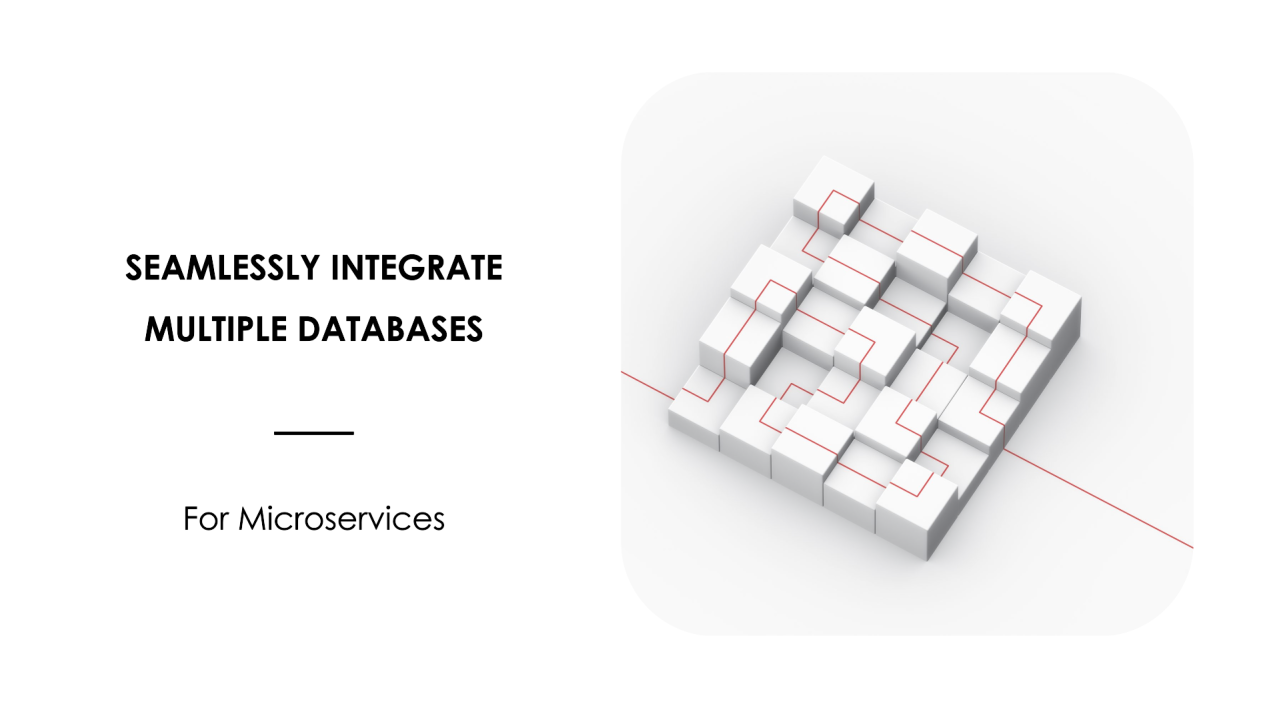
Preface
In today’s data-driven landscape, many applications rely on multiple databases to store different types of information. For instance, a product may have separate databases for managing customer data and order information. Integrating these databases efficiently is crucial for building robust and scalable applications.
In this article, I’ll explore how to seamlessly integrate multiple databases using GoLang and PostgreSQL, two powerful technologies widely used in modern software development.
Why opt for multiple databases?
Before diving into the technical aspects, let’s briefly discuss why applications might use multiple databases. Separating data into different databases based on its nature or usage pattern offers several benefits, including:
- Isolation: Different types of data can be kept separate, reducing the risk of data corruption or unauthorized access.
- Scalability: Each database can be scaled independently based on its workload, ensuring optimal performance.
- Flexibility: Developers can choose the most appropriate database technology for each type of data, maximizing efficiency and functionality.
Use Case
In a hypothetical scenario, we are developing a distributed e-commerce platform where distinct microservices manage customer and order data. When a customer initiates an order, the system requires seamless communication between these microservices—specifically, the customer service and the order service—to ensure a successful transaction.
To achieve this, integration of the databases associated with these microservices, namely the customer database and the order database, becomes important. In particular, it is essential to initiate transactions that encompass operations involving both databases. This ensures that if any part of the transaction fails, the entire transaction is rolled back, maintaining the integrity of the data.
Please keep in mind that each microservice has its own database, and when a user places an order, we have to ensure global consistency across all databases.
Example using Golang and PostgreSQL
Getting Started
To demonstrate the integration of multiple databases in GoLang, we’ll create a simple application that manages customer and order information using PostgreSQL databases. Follow these steps to set up the project:
Step 1: Install Dependencies
Let’s ensure we have GoLang and PostgreSQL installed on our system. Additionally, install the PostgreSQL driver for Go using the following command:
go get github.com/lib/pqStep 2: Set Up PostgreSQL Databases
Let’s create two PostgreSQL databases named customer_db and order_db using preferred PostgreSQL management tool or command line interface:
CREATE DATABASE customer_db;
CREATE DATABASE order_db;Step 3: Define Database Schema
Let’s create tables for customers and orders in their respective databases. Here’s a simplified schema for demonstration purposes: Customer Table Schema:
CREATE TABLE customers (
id SERIAL PRIMARY KEY,
name VARCHAR(100),
email VARCHAR(100)
);CREATE TABLE orders (
id SERIAL PRIMARY KEY,
customer_id INT,
product_name VARCHAR(100),
quantity INT,
FOREIGN KEY (customer_id) REFERENCES customers(id)
);Step 4: Connect to Databases in GoLang
Now, let’s write GoLang code to connect to both databases and perform basic operations. Below is a sample code snippet:
func main() {
// Connect to customer database
customerDB, err := sql.Open("postgres", "postgres://username:password@localhost/customer_db?sslmode=disable")
if err != nil {
panic(err)
}
defer customerDB.Close()
// Connect to order database
orderDB, err := sql.Open("postgres", "postgres://username:password@localhost/order_db?sslmode=disable")
if err != nil {
panic(err)
}
defer orderDB.Close()
// Start a transaction on customerDB
customerTx, err := customerDB.Begin()
if err != nil {
panic(err)
}
defer func() {
if err := recover(); err != nil {
// Rollback the transaction if an error occurs
customerTx.Rollback()
}
}()
// Start a transaction on orderDB
orderTx, err := orderDB.Begin()
if err != nil {
panic(err)
}
defer func() {
if err := recover(); err != nil {
// Rollback the transaction if an error occurs
orderTx.Rollback()
}
}()
// Perform database operations...
// If all operations succeed, commit the transactions
err = customerTx.Commit()
if err != nil {
panic(err)
}
err = orderTx.Commit()
if err != nil {
panic(err)
}
fmt.Println("Transactions committed successfully.")
}Challenges and Considerations
When designing for a distributed system, it’s crucial to consider various failure scenarios and plan for resilience and fault tolerance. Here are some key aspects to keep in mind before implementing the example:
Network Partitions:
Node Failures:
Data Consistency:
Data Replication:
Failure Recovery:
Monitoring and Logging:
Testing:
Conclusion
Integrating multiple databases seamlessly in GoLang is essential for building robust and scalable applications. By following the steps outlined in this article, you can effectively manage data across different databases while control and make use of the power of PostgreSQL and GoLang. By considering these aspects and planning for resilience and fault tolerance from the outset, we can build a resilient distributed system that is capable of handling failures gracefully and providing high availability and reliability to users.
NOTE: I'm constantly delighted to receive feedback. Whether you spot an error, have a suggestion for improvement, or just want to share your thoughts, please don't hesitate to comment/reach out. I truly value connecting with readers!